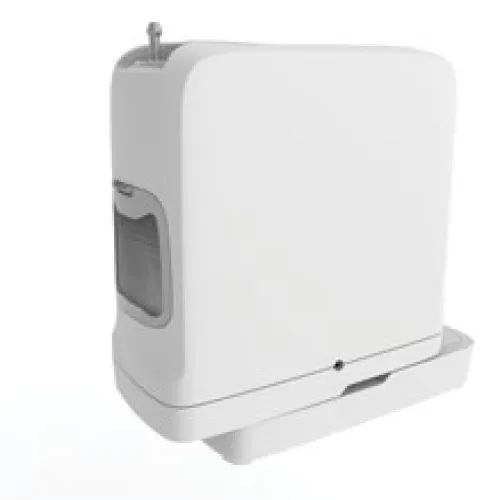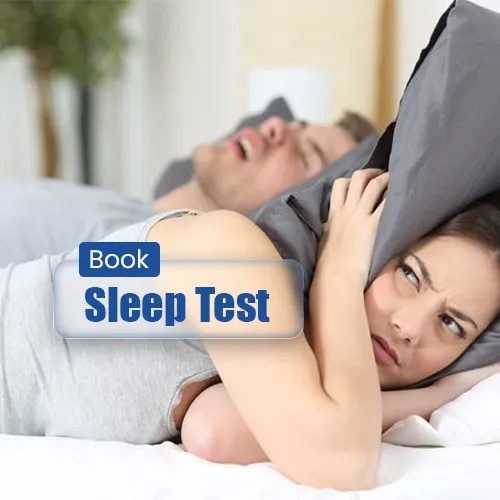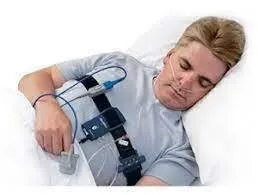Sleep Study at Home
₹14,500.00 Original price was: ₹14,500.00.₹1,899.00Current price is: ₹1,899.00.
Key Features
| Sleep Study Level | Level 3 |
|---|---|
| Disorders Diagnosed | Sleep Apnea |
| Reporting Parameters | AHI, Oximetry, Snoring, Nasal Airflow, Body Movement |
Category: Sleep Test
Description
About Sleep Study at Home
Sleep study, also known as polysomnography, is a medical procedure used to diagnose sleep disorders and evaluate the quality of sleep. It involves monitoring and recording various physiological functions during sleep, such as brain activity, eye movements, heart rate, breathing patterns, body movement and oxygen levels.
Our Sleep Test Features
- Affordable Price in the Industry
- Comfort of Home
- More Channels
- Trained Staff
- Pulmonologist verified
- Report Delivery within 24-48hrs
Types of sleep Study
Generally, there are three levels of sleep study tests: Level 3 and Level 2 and Level 1. Level 1 is only performed in hospitals/sleep centres.
| Level 3 | Advanced Test (Level 2) | |
|---|---|---|
| Price | ₹1899 | ₹5399 |
| For | Those who are at risk of Sleep Apnea | Those who are suspected to have moderate to severe obstructive sleep apnea (OSA), Central Sleep Apnea (CSA), PLMS, REM sleep related disorder, Insomnia and other sleep related disorders. |
| CPAP Titration | ❌ | Pressure requirement will be titrated (₹1499 extra) |
| Location | Home | Home |
| Technician Available | ❌ | ✅ |
| Electrodes used | ❌ | ✅ |
| Snoring | ✅ | ✅ |
| Breathing Activity | ✅ | ✅ |
| Airflow | ✅ | ✅ |
| Brain Activity | ❌ | ✅ |
| Muscle Activity | ❌ | ✅ |
| Body Movement | ❌ | ✅ |
| Oxygen Saturation | ✅ | ✅ |
| Heart Rhytm | ✅ | ✅ |
| Eye Movements | ❌ | ✅ |
| REM Sleep Detection | ❌ | ✅ |
| Sleep Apnea | ✅ | ✅ |
| PLMS | ❌ | ✅ |
| REM Sleep Behaviour Disorder | ❌ | ✅ |
| Report Availability | Within 24 hours | Within 24-48 hours |
Level 3 Sleep Study
In a Level 3 sleep study, the patient wears portable monitoring equipment while at home. These devices typically record fewer parameters compared to a Level 2 sleep study, but they can still provide valuable information for diagnosing certain sleep disorders.
Level 2 Sleep Study
A Level 2 sleep study is a comprehensive evaluation conducted overnight. It involves the use of multiple sensors and monitoring equipment to record various physiological functions during sleep. The most commonly used sensors in sleep study are Electrocardiogram (EKG), Electro-encephalogram (EEG), Electrooculography (EOG), Oximeter and many other sensors are also used to monitor volume of snore, respiratory effort, body position, respiratory flow etc. A trained technician monitors the patient throughout the night and gathers data for analysis by a sleep specialist.
Sleep Study Test at Home Procedure
Depending on the complexity of the study, the sleep study technique can be carried out in a hospital, clinic, or even at home. The rapid eye movement (REM) phase and the non-rapid eye movement (NREM) phase of sleep are the two separate phases that are observed during the entire operation. Multiple aspects of the body’s operations are noticed when a person first falls asleep, during NREM sleep.
- A technician places sensors on the legs, eyes, chest, chin, and scalp to collect this data. These sensors are left in place overnight and taken off the following morning. They are linked to a computer that tracks and stores information on various factors.
- People who have trouble falling asleep occasionally could be given a Positive Airway Pressure (PAP) machine. By keeping the airways open, this machine gently provides air to help with breathing. Data is gathered via a portable device in level 3 sleep investigations.
- The patient is given this machine, which must be given back after the process. Similar to a level 2 sleep test, it enables the monitoring of crucial sleep characteristics. Compared to level 3 sleep test, level 2 sleep studies include more sensors.
Shipping & Delivery

Shipping & Delivery Policy
At Oxygen4India, we provide nationwide delivery across India with orders processed within 1-2 business days and delivered in 3-7 business days depending on location. We offer priority shipping for urgent medical needs, with shipping charges automatically calculated at checkout based on weight and location.
Once shipped, you'll receive tracking information via email/SMS to monitor your order in real-time. While we strive for timely delivery, delays may happen due to natural disasters, strikes, or transport disruptions, and we will notify you of any issues. Remote areas may experience extended delivery times, so check pin code availability during checkout.
For problems with lost, damaged, or delayed packages, contact us immediately at sales@oxygen4india.com or call +91 8686864336 | +91 9725750000 with your Order ID and photos if applicable. If you have special delivery requirements for hospital equipment setup or demonstrations, add notes at checkout or contact us after ordering.













